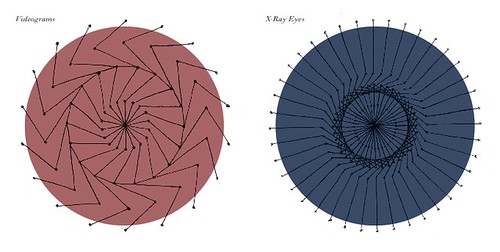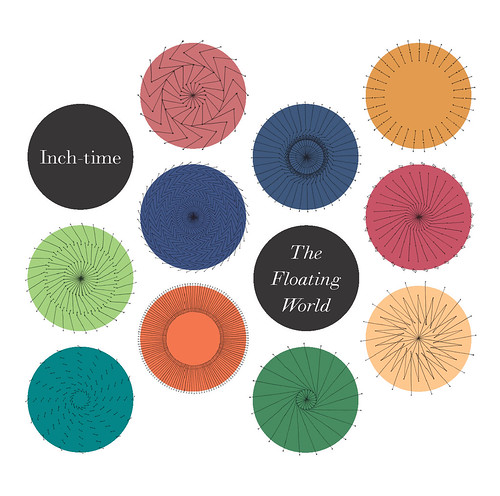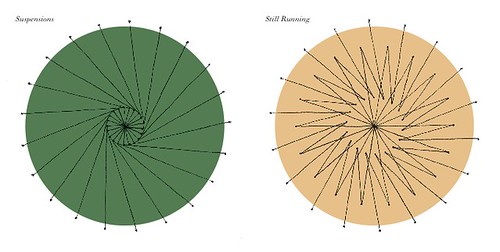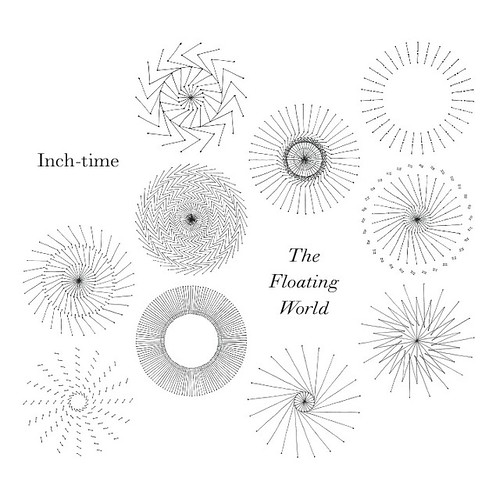Monday, 12:00am
10 January 2011
Circle logic
Subjective mapping meets ‘data accuracy’ in The Floating World
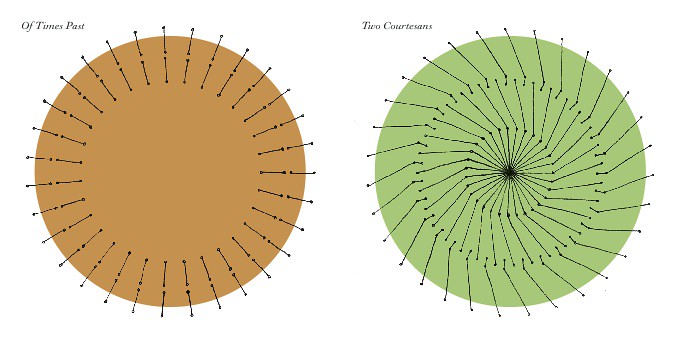
The artwork for The Floating World, a new instrumental electronic album by Inch-Time is by designer-illustrator Stefanie Posavec.
She notes that her methods, ‘might irk a rigorous information designer,’ since it applies an ‘infographic’ approach to her subjective responses to the music’s sound – a different circular image for each track on the album.
‘I notated the up-and-down aspects of the sounds using a pencil, then created the circular designs by repeating the initial pencil sketch according to the number of times the sound was heard within the song,’ Posavec explains. ‘It's a mix of data accuracy and subjective mapping.’
The CD cover (above) and slipcase (bottom) show all the track diagrams in colour and black and white respectively, while the booklet shows one image per page – like an instrumental lyric sheet.
So the graphics tell you something about the way the tracks differ from each other in texture and activity.
Inch-time is the nom de disque of Stefan Panczak, who made The Floating World on a laptop, citing the inspiration of Japanese artists Hiroshige and Hokusai. You can hear and buy Panczak’s music on his Mystery Plays Records site.
More about Stefanie Posavec at her site www.itsbeenreal.co.uk. and on ‘Designing MyFry’ on the Eye blog.
Eye is the world’s most beautiful and collectable graphic design journal, published quarterly for professional designers, students and anyone interested in critical, informed writing about graphic design and visual culture. It’s available from all good design bookshops and online at the Eye shop. Eye 78 is on press. For a taste of the last issue, no. 77, see Eye before you buy on Issuu.

